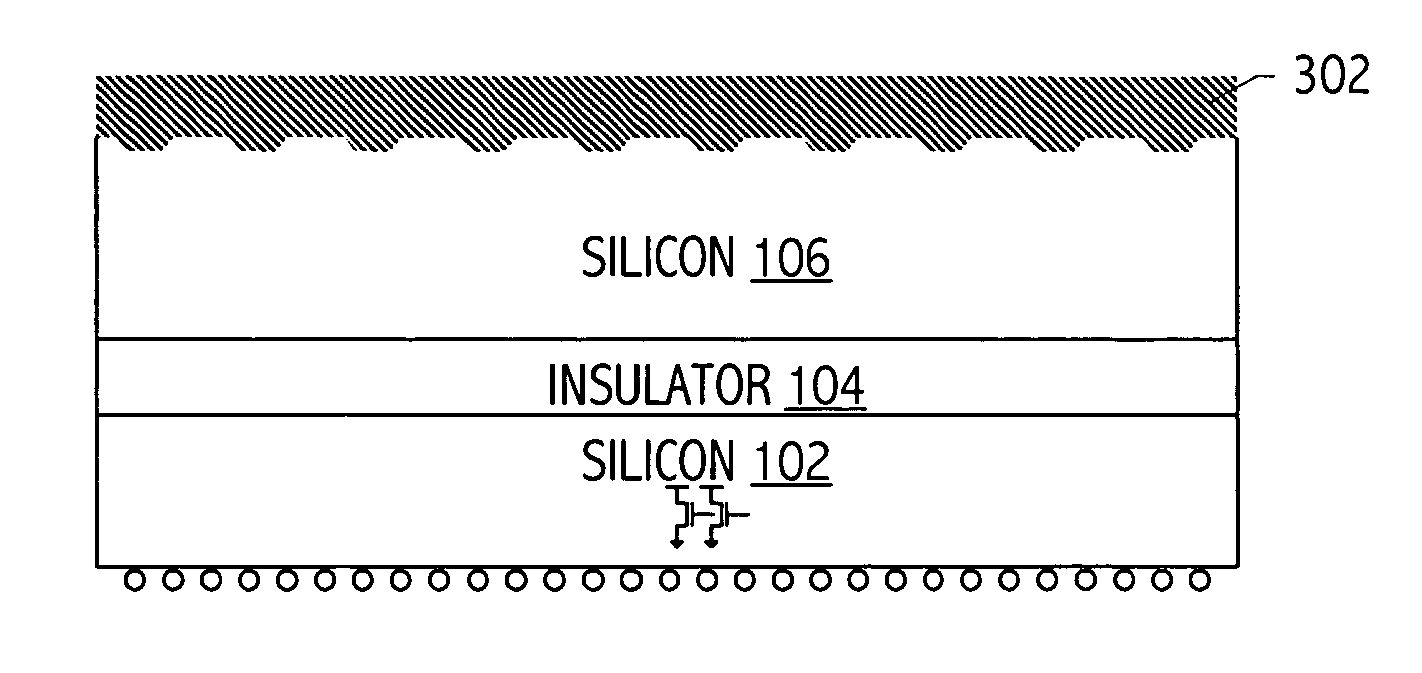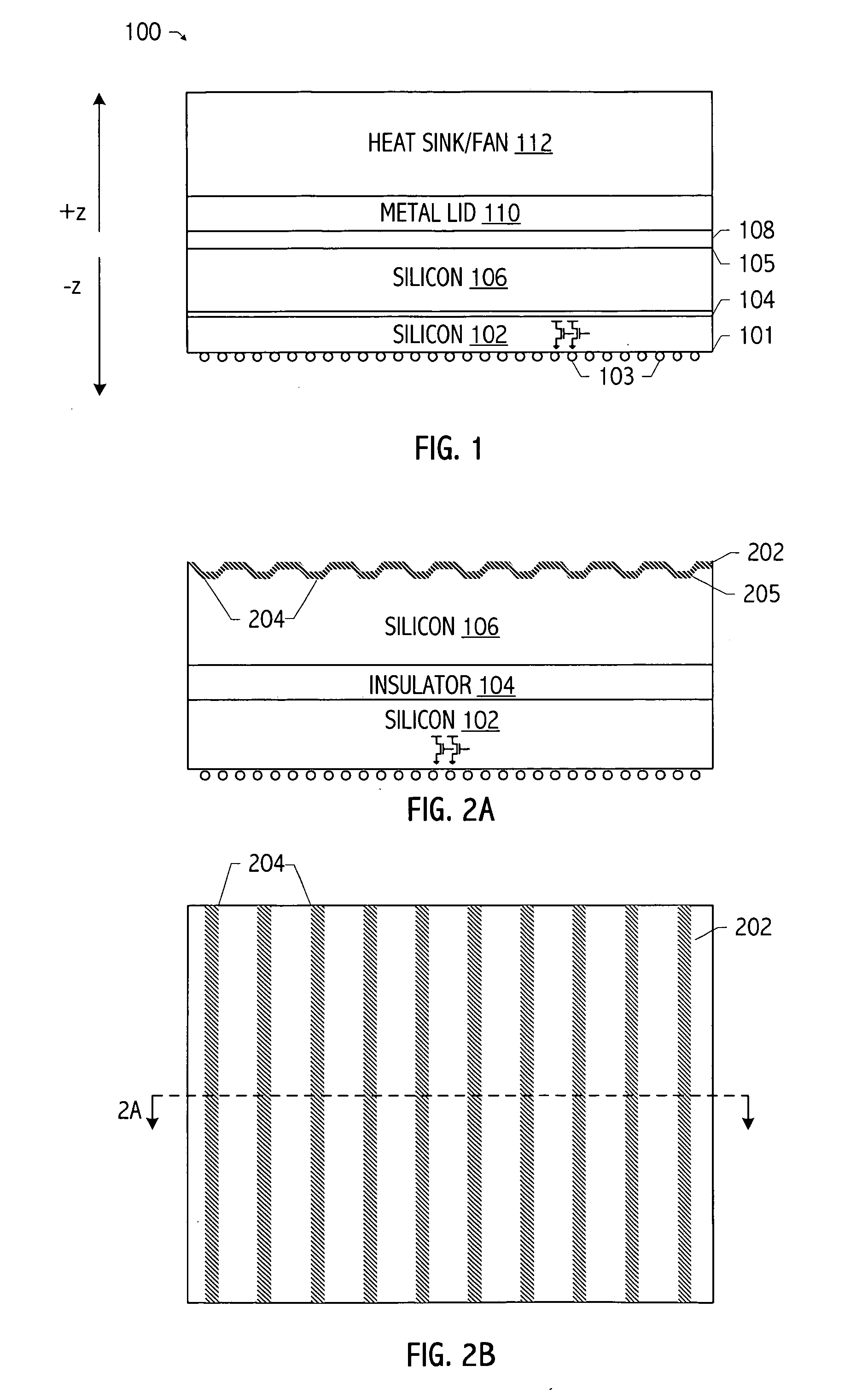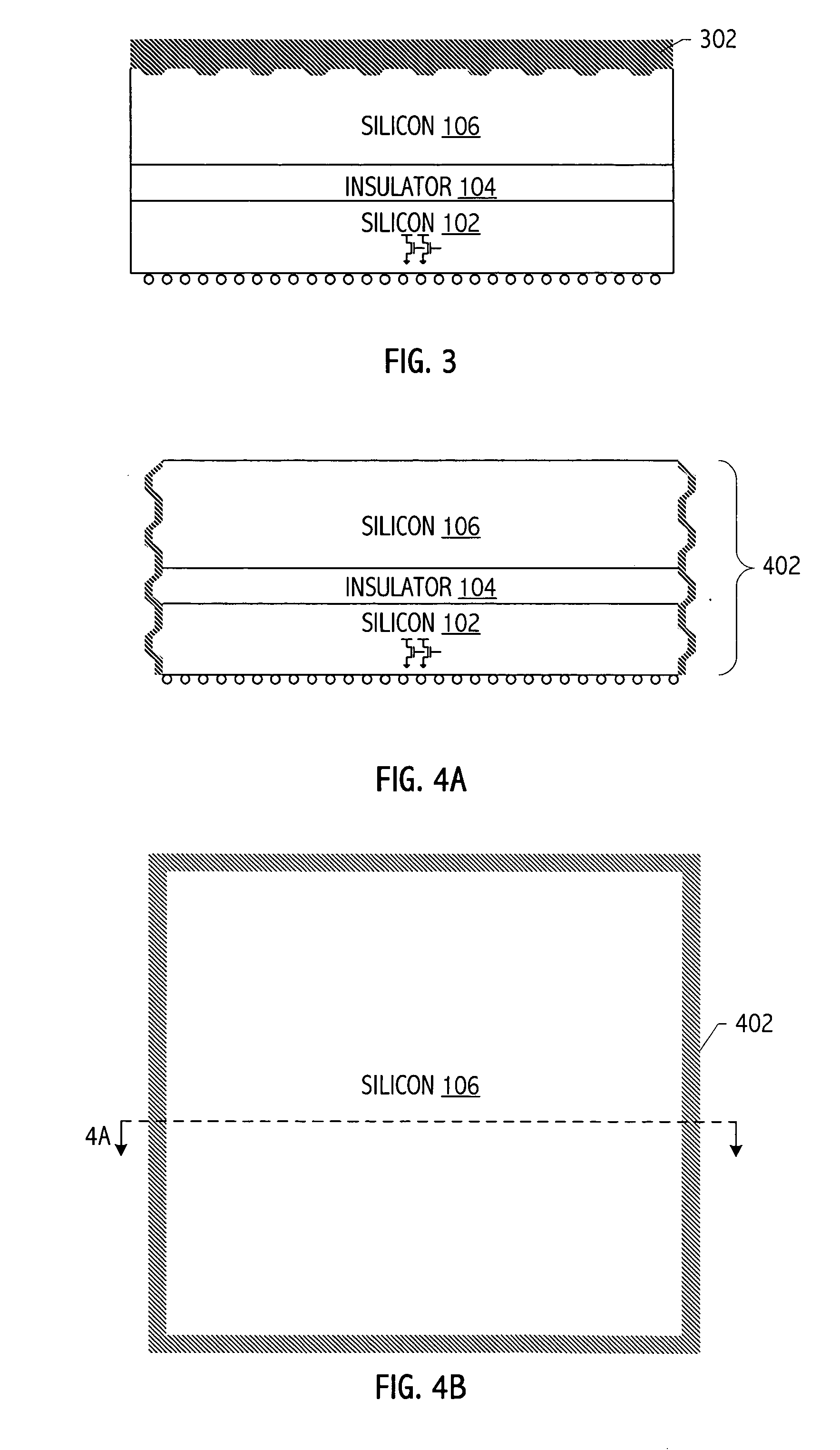Integrated circuit with increased heat transfer
a technology of integrated circuits and heat transfer, which is applied in the direction of semiconductor devices, semiconductor/solid-state device details, electrical apparatus, etc., can solve the problems of reducing the reliability and efficiency of integrated circuits, silver or gold alloys with low thermal resistance, and the lid thickness may be reduced, so as to reduce the thermal resistivity of integrated circuit dies and increase the surface area of lateral sides. , the effect of increasing the surface area
- Summary
- Abstract
- Description
- Claims
- Application Information
AI Technical Summary
Benefits of technology
Problems solved by technology
Method used
Image
Examples
Embodiment Construction
)
[0025] Referring to FIG. 1, an exemplary integrated circuit and cooling technique includes a silicon substrate 106, insulator layer 104, and silicon layer 102. Silicon layer 102 includes substantially all of the circuit devices in packaged integrated circuit 100. The interface, e.g., interface 101, between silicon layer 102 and conductive bumps 103 is the front side of the integrated circuit. Interface 105, i.e., the interface between silicon substrate 106 and thermal interface material (TIM) 108, is the backside of the integrated circuit and is substantially planar.
[0026] Thermal interface material 108 is included between metal lid 110 and silicon substrate 106 to eliminate air gaps produced by surface irregularities of metal lid 110 and silicon substrate 106 and to increase joint conductivity to improve heat transfer between metal lid 110 and silicon substrate 106. Thermal interface material 108 may be a thermal grease, thermally conductive compound (e.g., an aluminum compound),...
PUM
 Login to View More
Login to View More Abstract
Description
Claims
Application Information
 Login to View More
Login to View More - R&D
- Intellectual Property
- Life Sciences
- Materials
- Tech Scout
- Unparalleled Data Quality
- Higher Quality Content
- 60% Fewer Hallucinations
Browse by: Latest US Patents, China's latest patents, Technical Efficacy Thesaurus, Application Domain, Technology Topic, Popular Technical Reports.
© 2025 PatSnap. All rights reserved.Legal|Privacy policy|Modern Slavery Act Transparency Statement|Sitemap|About US| Contact US: help@patsnap.com



